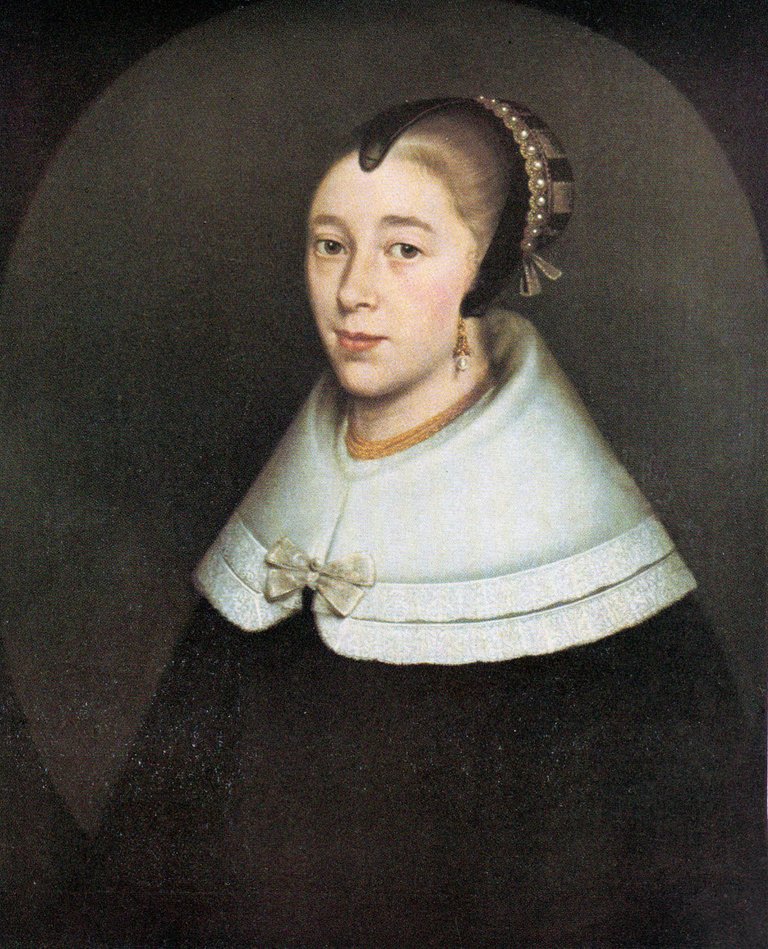THE DUTCH "GOLDEN ERA"
So the small group of Dutch settlers came to the Cape as a result of a director's decision by one of the biggest companies in the world, the Vereenigde Oost-Indische Compagnie, the VOC, (Dutch East India Company), established by the Dutch, one of the smallest nations of Europe, who was experiencing its "Golden Era" in 1650.
Europe accepted the seven united provinces of the Netherlands without question; trade flourished; there was plenty of work; and everyone prospered. Along the moats of Amsterdam, tradesmen built beautiful houses. Science and arts flourished. The Netherlands had five universities, and scholars such as Hugo de Groot were acknowledged and respected throughout Europe. It was the time of the great painters: Rembrandt van Rijn, Frans Hals, Jan Steen, and others. The poetry of Joost van den Vondel, PC Hooft, and others, were admired everywhere. The small country even established colonies in the East as well as along the coasts of North and South America and West Africa. The Dutch language spread to three continents: North and South America, Indonesia and South Africa.

REMBRANDT VAN RIJN'S "NIGHTWATCH"
Jan van Riebeeck, who was the leader of 150 men that arrived at the Cape in April 1652, was born in Culemborg on 21 April 1619. He lived a rather adventurous life, such as being shipwrecked at Sierra Leone, and visits to Japan, China, Formosa, Greenland, West Indies, Saint Helena and the Cape. He was married to Maria de la Queillerie, daughter of a Huguenot preacher.

MARIA DE LA QUEILLERIE
From the very beginning contact took place between the Dutch and the Khoi (Hottentots), one of the indigenous groups at the Cape. Two Khoi people later became notorious: Krotoa, or Eva, as she was called by the Dutch, and her kinsman, Herry, captain of the "STRANDLOPERS). Maria van Riebeeck took Eva (1642 – 1674) into their home and gave her a Christian and European education. She spoke Dutch fluently and also sometimes acted as interpreter between the Khoi and the VOC. In 1664 she married the surgeon and inventor Pieter van Meerhoff. After his murder in 1667, while on expedition, Eva lived such an immoral life that a free burgher obtained permission to take two of her children with him to Mauritius. In Mauritius, one of Eva's children, Peternella, married a Dutchman, one Daniel Zaayman. In 1709 they returned to the Cape.
By Samuel Daniell - Suid-Afrikaanse Geskiedenis in Beeld (1989) by Anthony Preston. Bion Books: Printed in South Africa., Public Domain, https://commons.wikimedia.org/w/index.php?curid=3716470
KHOI PREPARING TO MOVE
In this article I made extensive use of the most wonderful book about the history of the Afrikaner: Steyn, JC. Afrikanerjoernaal – 'n Vervolgverhaal in 365 episodes. FAK, 2016.
https://steemit.com/teamsouthafrica/@minnaloushe/afrikaans-history-part-i
https://steemit.com/teamsouthafrica/@minnaloushe/afrikaans-history-part-ii

Hi there @minnaloushe. You should consider using steemiteducation as one of your tags when it comes to educational content. It's tracked by @curie so you can pick up some nice extra votes that way :)
Thank you, @therneau. I will keep that in mind.